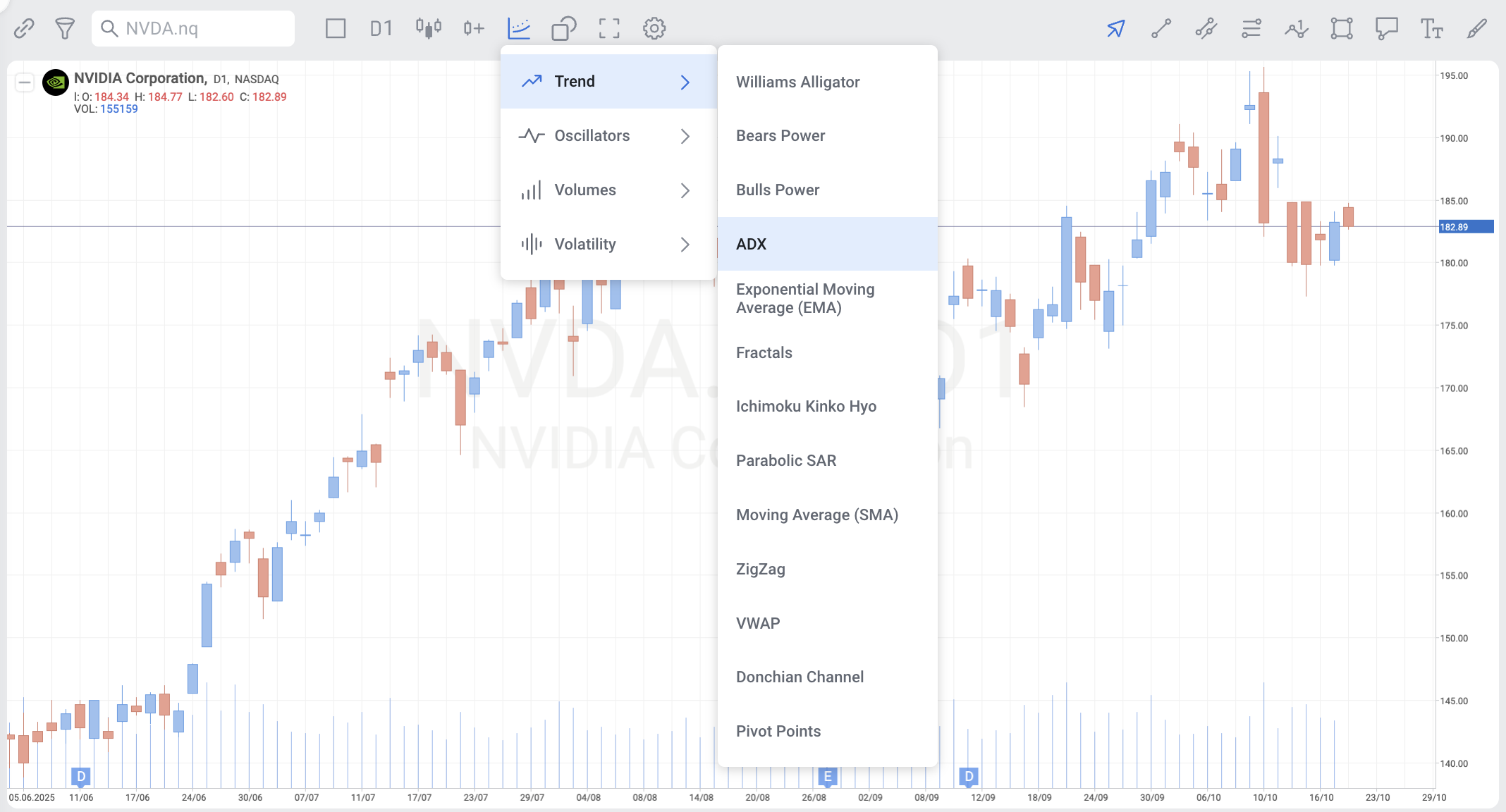Overview
The Average directional index (ADX) is an indicator used in technical analysis as an objective value for the strength of a trend. ADX is non-directional, so it quantifies a trend's strength regardless of whether it is up or down. It is usually plotted in a chart window along with two lines known as the DMI (Directional Movement Indicators).
Analysis of ADX is a method of evaluating trends and can help traders choose the strongest trends.
There are two forms of stock analysis: fundamental and technical. Fundamental analysis selects stocks based on business performance, whereas technical analysis selects stocks based on price movement. When technicians look for patterns over time to confirm a continuation or trend reversal, they often use the average directional index as an indicator. Developed by Welles Wilder for use with commodities and daily prices, the indicator is also used for stock selection. Wilder used the plus directional movement (+DM) and the minus direction movement (-DM) to determine the ADX.
To switch on ADX in the terminal, click on "Technical indicators" - "Trend" - "ADX".


Key takeaways
- Designed by Welles Wilder for commodity daily charts, but can be used in other markets or other timeframes.
- The price is moving up when +DI is above -DI, and the price is moving down when -DI is above +DI.
- Crosses between +DI and -DI are potential trading signals as bears or bulls gain the upper hand.
- The trend has strength when ADX is above 25. The trend is weak or the price is trendless when ADX is below 20, according to Wilder.
- Non-trending doesn't mean the price isn't moving. It may not be, but the price could also be making a trend change or is too volatile for a clear direction to be present.
Description
Traders start by using the ADX to determine if there is a trend. A strong trend is occurring when the ADX is over 25; likewise, there is no trend when the ADX falls below 20. When the +DI line is greater than the -DI line, the bulls have the directional edge. However, when the -DI line is above the +DI line, the bears have the directional edge. As with all technical trends, traders use several indicators to confirm a movement. One option is to sell when -DI is up and the major trend is down. Another option is to buy when +DI is higher than -DI, but only when the larger trend is also moving up. In other words, it is possible to use the ADX as a way to time an entry on a market that is already confirmed to be trading in a particular direction. To find out more about this indicator and it's trading signals click here.
Settings in the chart
To find the ADX Settings on the chart, click on "Remove objects" and then select "ADX".
Settings in RoboBuilder
To find the ADX settings in Strategies, choose "Indicator" - "Trend" - "ADX" - "Parameters".

Since the Average Directional Index (ADX) indicator consists of three separate components (ADX, DI+, DI-) each of which has its own parameters and values, in RoboBuilder the Average Directional Index (ADX) is also divided into three indicators:
- ADX
- DI+
- DI-
All indicators can be used either together or separately with other indicators.